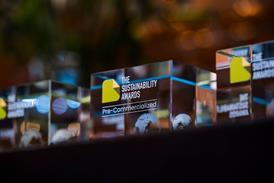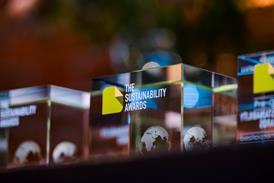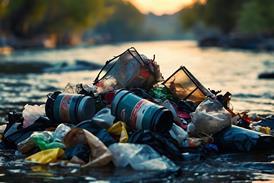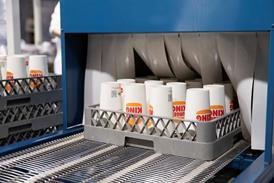
Chemists at Northwestern University are using moisture from the air to depolymerize plastic waste for further plastic production; this is set to save recyclers the task of sorting mixed waste streams while avoiding expensive, energy-intensive, potentially toxic processes.
Conventional plastic recycling processes require expensive catalysts like platinum and palladium, which can sometimes be toxic; the reactions themselves call for high temperatures and intense energy and solvents, which can create toxic byproducts in turn.
Furthermore, separating the recycled materials from the solvents after a reaction is performed is believed to be an energy-intensive, time-consuming task to perform.
In what is described as a ‘non-toxic, environmentally friendly, solvent-free process’, Northwestern University scientists have utilized a molybdenum catalyst and activated carbon; both are considered ‘inexpensive, abundant and non-toxic materials’. Apparently, the catalyst is ‘durable and recyclable’, so it can be reused without impacting its effectiveness.
The catalyst and activated carbon are applied to polyethylene terephthalate (PET) and heated up until the plastic depolymerizes. Then the molecules are exposed to air, at which point it reacts and becomes terephthalic acid (TPA).
This process is described as ‘fast and effective’, claiming to have recovered 94% of the possible TPA in only four hours. The researchers emphasize that the only byproduct is acetaldehyde, an industrial chemical considered ‘valuable’ and ‘easy to remove’.
“Using solvents has many disadvantages,” explained the study’s co-corresponding author, Yosi Kratish. “They can be expensive, and you have to heat them up to high temperatures. Then, after the reaction, you are left with a soup of materials that you have to sort to recover the monomers.
“Instead of using solvents, we used water vapor from air. It’s a much more elegant way to tackle plastic recycling issues.
“Air contains a significant amount of moisture, making it a readily available and sustainable resource for chemical reactions. On average, even in relatively dry conditions, the atmosphere holds about 10,000 to 15,000 cubic kilometers of water.
“Leveraging air moisture allows us to eliminate bulk solvents, reduce energy input and avoid the use of aggressive chemicals, making the process cleaner and more environmentally friendly.”
With PET thought to constitute 12% of the total plastics used across the world, the researchers hope that this ‘safer, cleaner, cheaper and more sustainable’ recycling process can be used to turn waste into new PET products or other valuable materials. It can also be applied to mixed plastic streams, since it only works on polyesters and negates the need to sort plastics beforehand.
Testing on plastic bottles, mixed plastic waste, shirts, and other real material streams has reportedly proven ‘effective’. Apparently, even coloured plastics were depolymerized into pure and colourless TPA.
Going forward, the researchers envision that the process will be scaled up for industrial use, depolymerizing large quantities of plastic waste.
“The U.S. is the number one plastic polluter per capita, and we only recycle 5% of those plastics,” Kratish continued. “There is a dire need for better technologies that can process different types of plastic waste.
“Most of the technologies that we have today melt down plastic bottles and downcycle them into lower-quality products.
“What’s particularly exciting about our research is that we harnessed moisture from air to break down the plastics, achieving an exceptionally clean and selective process. By recovering the monomers, which are the basic building blocks of PET, we can recycle or even upcycle them into more valuable materials.”
Naveen Malik, the study’s first author, added: “Our study offers a sustainable and efficient solution to one of the world’s most pressing environmental challenges: plastic waste.
“Unlike traditional recycling methods, which often produce harmful byproducts like waste salts and require significant energy or chemical inputs, our approach uses a solvent-free process that relies on trace moisture from ambient air. This makes it not only environmentally friendly but also highly practical for real-world applications.
“Our technology has the potential to significantly reduce plastic pollution, lower the environmental footprint of plastics and contribute to a circular economy where materials are reused rather than discarded. It’s a tangible step toward a cleaner, greener future, and it demonstrates how innovative chemistry can address global challenges in a way that aligns with nature.”
The study was supported by the U.S. Department of Energy and published in the Royal Society of Chemistry’s Green Chemistry journal.
The development comes as depolymerization becomes increasingly popular among plastics recyclers. Last year, GR3N opened and launched an industrial demonstration plant for its microwave-assisted depolymerization technology, aspiring to become the ‘world’s leading supplier’ of PET and polyester rebuilt from recycled monomers.
It went on to join forces with Schneider Electric to develop the ‘first’ open automation system for advanced plastic recycling; the solution is anticipated to reduce human error by 40% and engineering costs by 30%.
Elsewhere in the academia space, a team of researchers from Bournemouth University has unveiled what it describes as a ‘self-repairing’ plastic that aims to reduce plastic waste by improving durability. At the same time, researchers at the University of Washington have 3D-printed a ‘compostable’ packaging material made from coffee grounds, mushroom spores, and mycelium, which is expected to serve as a replacement for polystyrene dunnage.
If you liked this story, you might also enjoy:
Reuse vs. single use – which is better for the environment?
Sustainable Innovation Report 2025: Current trends and future priorities
What can the world learn from South Korea’s world-leading performance in plastics circularity?





















No comments yet